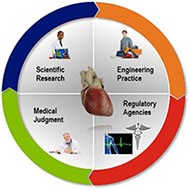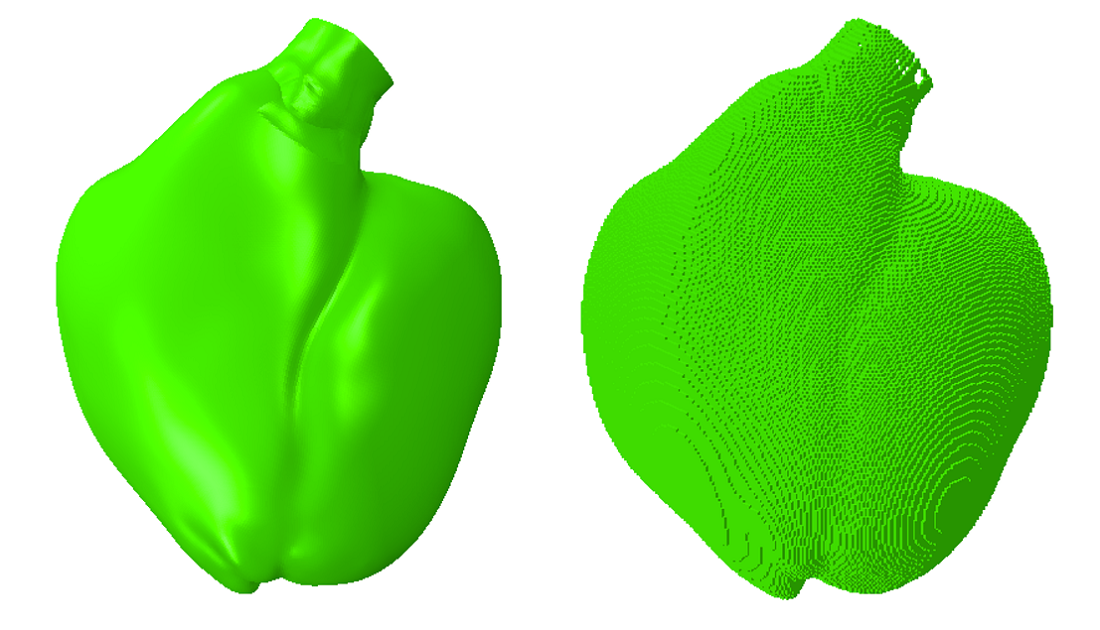Cardiac arrhythmia can be an undesirable and potentially lethal side effect of drugs. During this condition, the electrical activity of the heart turns chaotic, decimating its pumping function, thus diminishing the circulation of blood through the body. Some kind of cardiac arrhythmia, if not treated with a defibrillator, will cause death within minutes.
Before a new drug reaches the market, pharmaceutical companies need to check for the risk of inducing arrhythmias. Currently, this process takes years and involves costly animal and human studies. In this project, the Living Matter Laboratory of Stanford University developed a new software tool enabling drug developers to quickly assess the viability of a new compound. This means better and safer drugs reaching the market to improve patients’ lives.
This research project has been performed by researchers from the Living Matter Laboratory at Stanford University, and supported by Living Heart Project members from SIMULIA, Hewlett Packard Enterprise, Advania, and UberCloud. It is based on the development of a Living Heart Model (LHM) that encompasses advanced electro-physiological modeling. The end goal is to create a biventricular finite element model to be used to study drug-induced arrhythmias of a human heart.
 The Living Heart Project is uniting leading cardiovascular researchers, educators, medical device developers, regulatory agencies, and practicing cardiologists around the world on a shared mission to develop and validate highly accurate personalized digital human heart models. These models will establish a unified foundation for cardiovascular in silico medicine and serve as a common technology base for education and training, medical device design, testing, clinical diagnosis and regulatory science —creating an effective path for rapidly translating current and future cutting-edge innovations directly into improved patient care.
The Living Heart Project is uniting leading cardiovascular researchers, educators, medical device developers, regulatory agencies, and practicing cardiologists around the world on a shared mission to develop and validate highly accurate personalized digital human heart models. These models will establish a unified foundation for cardiovascular in silico medicine and serve as a common technology base for education and training, medical device design, testing, clinical diagnosis and regulatory science —creating an effective path for rapidly translating current and future cutting-edge innovations directly into improved patient care.
The Stanford team in conjunction with SIMULIA have developed a multi-scale 3-dimensional model of the heart that can predict the risk of this lethal arrhythmias caused by drugs. The team added capabilities to the Living Heart Model to include highly detailed cellular models, to differentiate cell types within the tissue and to compute electro-cardiograms (ECGs). This model is now able to bridge the gap between the effect of drugs at the cellular level to the chaotic electrical propagation that a patient would experience at the organ level.
A computational model that is able to assess the response of new drug compounds rapidly and inexpensively is of great interest for pharmaceutical companies, doctors, and patients. Such a tool will increase the number of successful drugs that reach the market, while decreasing cost and time to develop them, and thus help hundreds of thousands of patients in the future. However, the creation of a suitable model requires taking a multiscale approach that is computationally expensive: the electrical activity of cells is modelled in high detail and resolved simultaneously in the entire heart. Due to the fast dynamics that occur in this problem, the spatial and temporal resolutions are highly demanding.

During the preparation and Proof of Concept phase (UberCloud Experiment 196), we set out to build and calibrate the healthy baseline case, which we then used to perturb with different drugs. After creating the UberCloud software container for SIMULIA’s Abaqus 2017 and deploying it on the HPE server in the Advania cloud, we started refining the computational mesh which consisted of roughly 5 million tetrahedral elements and 1 million nodes. Due to the intricate geometry of the heart, the mesh quality limited the time step, which in this case was 0.0012 ms for a total simulation time of 5000 ms. After realizing that it would be very difficult to calibrate our model with such a big runtime, we decided to work on our mesh, which was the current bottleneck to speed up our model. We created a mesh that was made out of cube elements (Figure 1). With this approach, we lost the smoothness of the outer surface, but reduced the number of elements by a factor of ten and increased the time step by a factor of four, for the same element size (0.7 mm). With a much faster model, we were able to calibrate the healthy, baseline case, which was assessed by electro-cardiogram (ECG) tracing (Figure 2) that recapitulates the essential features.

During the final production phase, we have adapted all features of the model to a finer mesh with now 7.5 million nodes and 250,000,000 internal variables that are updated and stored within each step of the simulation. We have run 42 simulations to study whether a drug causes arrhythmias or not. With all the changes above we were able to speed up one simulation by a factor of 27 which then (still) took 40 hours using 160 CPU cores on Advania’s HPE system equipped with latest Intel Broadwell E5-2683v4 nodes and Intel OmniPath interconnect. In these simulations, we applied the drugs by blocking different ionic currents in our cellular model, replicating what is observed in cellular experiments. For each case, we let the heart beat naturally and see if the arrhythmia is developed.

Figure 3 shows the application of the drug Quinidine, which is an anti-arrhythmic agent, but it has a high risk of producing Torsades de Points, which is a particular type of arrhythmia. It shows the electrical transmembrane potentials of a healthy versus a pathological heart that has been widely used in studies of normal and pathological heart rhythms and defibrillation. The propagation of the electrical potential turns chaotic (Figure 3, bottom) when compared to the baseline case (Figure 3, top), showing that our model is able to correctly and reliably predict the anti-arrhythmic risk of commonly used drugs. We envision that our model will help researchers, regulatory agencies, and pharmaceutical companies rationalize safe drug development and reduce the time-to-market of new drugs.
Acknowledgement: The authors are deeply grateful for the support from Hewlett Packard Enterprise (the Sponsor), Dassault Systemes SIMULIA (for Abaqus 2017), Advania (providing HPC Cloud resources), and the UberCloud tech team for containerizing Abaqus and integrating all software and hardware components into one seamless solution stack.


























































